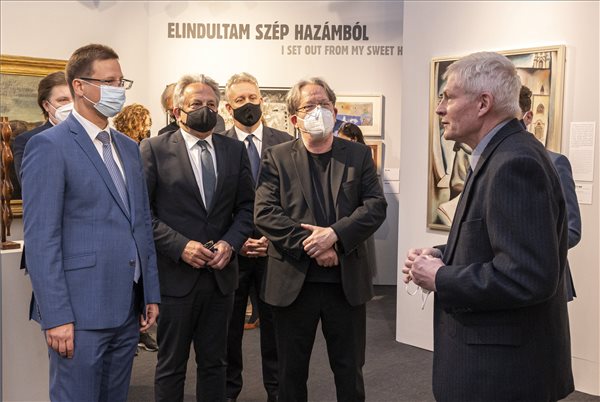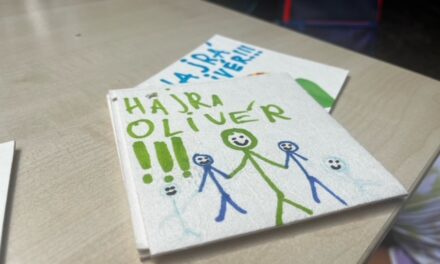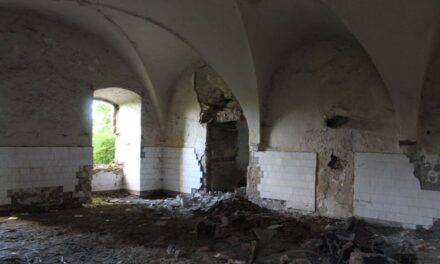An exhibition of the works of the most important Hungarian visual artists living in the separated territories opened on Friday in Székesfehérvár, the exhibition was opened by Gergely Gulyás, the minister in charge of the Prime Minister's Office.
"We belong together. The exhibition "Masterpieces of Hungarian fine art beyond Trianon's borders from the collection of the Hungarian National Gallery" was created by the Museum of Fine Arts - Hungarian National Gallery and the Szent István Király Museum.
In his speech opening the exhibition, Gergely Gulyás emphasized that
"led by the most important visual artists living in the territories separated after Trianon, the way of the cross created by the 20th century for Hungarians can be walked and in this calvary they show the community of fate and togetherness".
He believed that their point of view is different even if it is the same: eternal human, which is certainly valid in every part of the Earth, therefore it helps to distance yourself and at the same time to understand more deeply everything that happened to the Hungarians in the last century.
The minister emphasized that perhaps Trianon's biggest blow was the "disintegration" of the divided parts of the nation, life took a different course from here and beyond the border. Separate cultural forces were created, which until 1990 could only be connected at the cost of great efforts and often enormous heroism, he added.
According to Gergely Gulyás, there are two conditions for "surpassing Trianon": one is to reconnect the severed threads between Hungarians and Hungarians. He believed that in the decade that has passed since 2010, they have come a long way since the unification of the nation under public law in countless areas of cultural, economic, church, sports and community life.
The minister called the other important condition that
"let's make the Carpathian Basin our common home again with the joint efforts of all the nations living here",
which can be an island of peace, stability and prosperity. Central Europe and Hungary are so strong, they can be so free, they can decide their own destiny as much as they can add up their strength, he believed.
László Baán, the general director of the Museum of Fine Arts – Hungarian National Gallery, said that they had been preparing for the exhibition for a long time, but due to the epidemic situation, they could not open it last year. He noted about the location: Székesfehérvár, as an ancient coronation city, is the starting point of national unity, and in its history it preserves the history of the thousand-year-old Hungary.
He pointed out that the Trianon tragedy also tore the artistic life apart, but the "order to stay" was strong, so the artistic life continued even in the separated parts of the country. However, the "historical imprint" of this was extremely lacking in the country's most important public collection, the National Gallery, as opposed to the arts of the motherland, which is why a significant acquisition of works of art was made possible last year with government support.
The director general announced that outstanding works from the most important artists of the past 100 years were acquired from all parts of the country, and the best of the material will be presented to the public at this exhibition. According to his hopes, the exhibition put together by the curator György Szűcs will tour the entire Carpathian basin.
Mayor András Cser-Palkovics called the exhibition symbolic, because the restart of the city's cultural life begins with it. According to the press material, more than 80 works by almost 70 Hungarian artists from across the border can be seen in the István Csók Gallery.
The exhibition, organized on the occasion of the year of national unity, with its various thematic units, a glimpse of the life of the traditional village and the modern city, the evolution of landscape painting, the perception of more abstract, contemporary trends, the listing of typical pieces of painting, graphics and sculpture, the interacting works draws attention to the existence of a connected intellectual network that crosses borders.
In addition to artists who are also well-known in Hungary (János Mattis Teutsch, Jenő and Tibor Szervátiusz, Imre Nagy, Hugó Mund, Oszkár Nagy, Dávid Jándi from Nagybánya), there are lesser-known artists from here on the borders of Trianon (for example Béla Erdélyi, Gyula Szabó, György Bartusz, Ferenc Király's) works can also be seen at the exhibition, which can be visited until August 29.
MTI
Featured image: MTI/Zsolt Szigetváry













